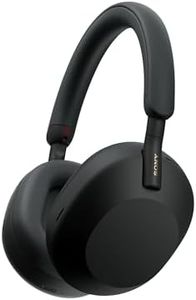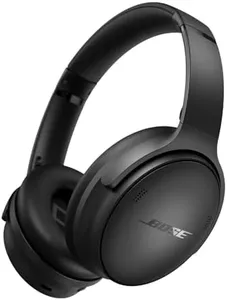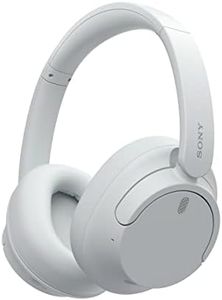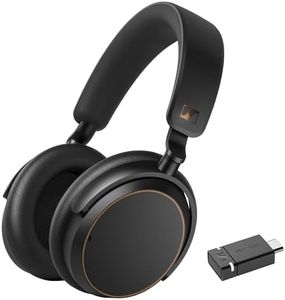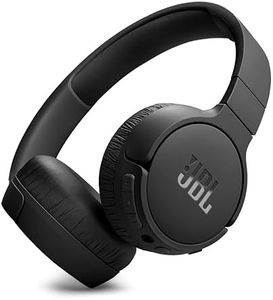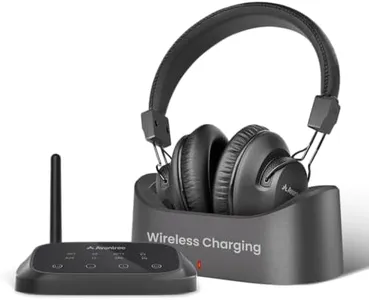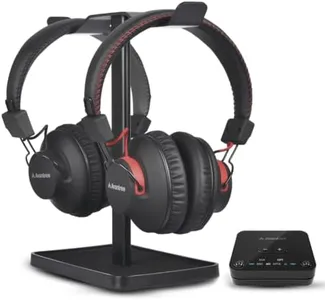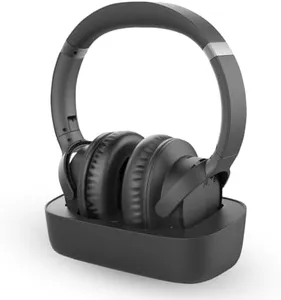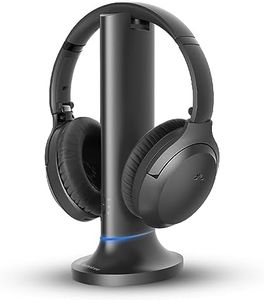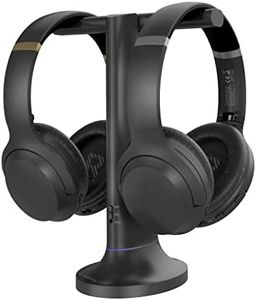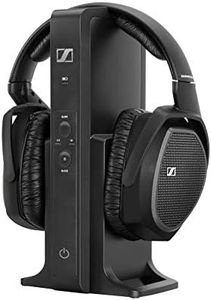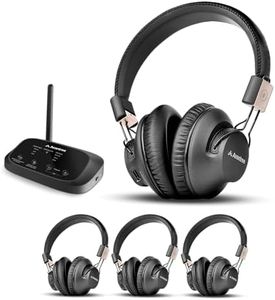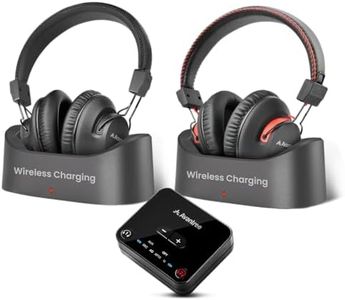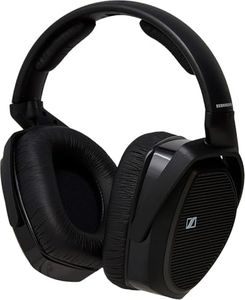We Use CookiesWe use cookies to enhance the security, performance,
functionality and for analytical and promotional activities. By continuing to browse this site you
are agreeing to our privacy policy
10 Best Wireless Headphones For TV Listening
From leading brands and best sellers available on the web.Buying Guide for the Best Wireless Headphones For TV Listening
When choosing wireless headphones for TV listening, the main goal is to find a pair that offers comfort, good sound quality, and reliable wireless connection that matches your needs and preferences. Think about how long you typically watch TV, the environment in which you'll use the headphones, and whether you plan to use them alone or with others. It's also helpful to consider any specific needs, such as hearing assistance or ease of setup. By focusing on the core features that matter most for your usage, you'll be more likely to end up with wireless headphones that truly enhance your TV watching experience.Wireless Connection TypeWireless headphones for TV typically use either Bluetooth or dedicated RF (radio frequency) transmitters. Bluetooth is compatible with most modern TVs and is great for convenience, but may have a little audio delay, which can be noticeable when watching TV. RF transmitters, on the other hand, usually come with a base station you connect to your TV and generally offer better range and less latency. Choose Bluetooth if you value versatility with other devices, but pick an RF system if you want a more seamless, lag-free TV experience.
Battery LifeBattery life indicates how many hours you can use the headphones before needing to recharge them. Short battery life (under 10 hours) might be fine if you watch TV only occasionally, but could be annoying if you tend to binge-watch. Medium battery life (10–20 hours) offers a good balance for average users, while longer battery life (over 20 hours) is best for heavy users or for those who don’t want to recharge often. Think about your TV watching habits to identify which battery range is right for you.
Comfort and FitSince you’ll likely be wearing the headphones for extended periods, comfort is crucial. Over-ear models generally offer more comfort for long watching sessions, but can be bulkier, while on-ear options are lighter but may put more pressure on your ears. Features like padded ear cups and adjustable headbands can make a big difference. If possible, try headphones on before buying or look for adjustable options to fit your head size and shape. If you wear glasses or have sensitive ears, prioritize models with soft, cushioned ear pads.
Sound QualitySound quality determines how clear and immersive your audio experience will be when watching TV. Look for headphones that provide clear dialogue and a balanced sound profile, so you don’t miss any details. Some models emphasize extra bass, while others focus on clarity. If you mainly watch movies, wider soundstage and rich bass might matter more. If you watch talk shows or dramas, prioritize models known for crisp dialogue. Matching the sound signature to your listening preferences ensures more enjoyment.
Audio LatencyAudio latency is the delay between the TV's sound and what you hear through the headphones. High latency can cause lip-sync issues, which can be distracting. RF and dedicated low-latency Bluetooth headphones often have less noticeable lag. If lip-sync accuracy is important to you, especially for action movies or sports, check for low-latency features or technologies like aptX Low Latency (if both your TV and headphones support it).
RangeRange describes how far you can move from the TV before the signal drops. RF headphones often offer longer ranges (sometimes over 100 feet, even through walls), while Bluetooth ranges are typically about 30 feet. If you like moving around or listening from another room, prioritize a longer range. If you’ll always sit close to the TV, range is less critical.
Ease of SetupSome wireless headphones are plug-and-play, while others require pairing or more complicated setup. RF models generally use a simple transmitter you connect via an audio jack, making them easier to install, especially for older TVs. Bluetooth headphones may require pairing, which can be simple or more involved, depending on your TV. Consider your comfort with technology and check if the headphones you choose will be easy to connect to your specific TV.
Hearing Assistance FeaturesCertain headphones are designed with features like volume amplification, speech enhancement, or balance controls for users with hearing difficulties. If you have trouble hearing dialogue or need to adjust volume independently from the TV, look for models with these features. They can make a significant difference in clarity and comfort for anyone with hearing needs.
